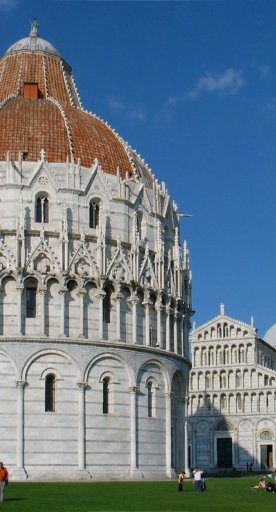Exploring music and medieval magic in Lajatico
From Bocelli to chestnuts
Sitting atop the hills in the province of Pisa, Lajatico is small in size but mighty in clout. Located about 50 kilometres from Florence, the small town of just 1,300 inhabitants boasts a history that stretches back to the Lombard era, but its heyday came in the Middle Ages, when it was ruled by thte Pannocchieschi Counts, and more recently thanks to its reputation as the birthplace of Andrea Bocelli, the renowned singer. This rich history is on full-display as you walk the small town’s streets.
-
1.Medieval magic
-
2.Religious institutions
-
3.The enduring legacy of Andrea Bocelli
-
4.Festivals and traditions

Medieval magic
Anyone who loves the Middle Ages will enjoy a visit to Lajatico. The town boasts a castle dating to the year 1000, though little remains of the original structure beyond the façade. You can still see the coat of arms of the Maritime Republic of Pisa over the entrance and, to the left, a lion and a shield with the Florentine fleur-de-lis, evidence of Lajatico’s history of being subject to both republics, a conflict that is even depicted in three scenes carved into stone inside the entrance hall, which show a battle between Pisa and Florence.
Though unproven, it’s said that the bell tower is part of the medieval castle. When the Gotti-Lega family granted public use of the tower in 1790, Donato Rosi from Volterra was commissioned to add both a clock and a bell-chime. This mechanism was removed in 1999, but you can see it on display in the Town Hall.
Religious institutions
Lajatico is also home to a number of places of worship, including the Parish Church of San Leonardo. Dating to the 13th century, the original single-nave building was enlarged in the mid-1800s when it became too small to welcome the growing community, adding two side aisles and many Greek-inspired elements. Those interested in modern and contemporary painting will find the church’s frescoes to be of great interest. The space boasts paintings by Gualtiero Anichini and Paolo Maiani.
The Oratory of San Sebastiano is another important building in Lajatico’s history, also known as the Chapel of the Fallen in honour of those who died in World War II. Built in 1520 as a place for brothers from the confraternity to pray, the space was later turned into refuge for travellers and pilgrims, remaining active until 1585.
The enduring legacy of Andrea Bocelli
Beloved musician Andrea Bocelli was born in Lajatico in 1958 and remains close to the town despite moving on long ago to forge his career. The area has become a major tourist destination thanks to Bocelli, especially during the month of July, when the singer returns to town for an exclusive concert for just one evening.
The concert is held in and takes its name from the Theatre of Silence, which was conceived of by Bocelli, who also contributed funds to its construction. The open-air theatre was built into the hill outside the town and recreates the sense of a true open-air theatre, when nature and material were one-in-the-same. The theatre was inaugurated in 2006 and every year since then, Bocelli has overseen the yearly concert that sees a myriad of international artists take the stage.
Festivals and traditions
Like many Tuscan towns, Lajatico is no stranger to local festivals and traditions. Truffle lovers will be pleased to know that the town is one of the privileged areas where the tasty tuber can be found, but the real queen of the land is the chestnut. The third Sunday of October is a particularly special day in Orciatico, a hamlet of Lajatico: this is when the whole hamlet celebrates the chestnut sagra, a sort of street party with food front and centre, boasting stands and delicacies throughout the streets.
Lajatico also comes to life for the Festa sull’Aia, at the end of June. Shining a light on the changing times, with disappearing traditions and economic uncertainty, the festival celebrates the town’s roots, showcasing the tools used in Tuscany’s agricultural customs and highlighting locally-produced products.
Start your discovery














































































